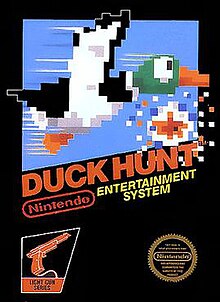 Number 10. – Duck Hunt
Number 10. – Duck Hunt
Without a doubt, this is one of the most overrated games of the 1980s decade. Sure, I’ll give it props for historical reasons of being a launch title for NES and the first light-gun console game, but like Bethesda’s titles, Duckhunt is mistaken as a masterpiece and is truthfully a broken game. You couldn’t possibly play this game with the NES controller that came with it. But what kind of technology allowed this to be possible? There were no extra peripherals required to make the NES Zapper function with a CRT TV. Many players are familiar with the Nintendo Wii Remote and how it works using an infrared sensor bar, but the Zapper requires no such thing. You simply plug it in to the console as you would any other controller and it knows where you’re aiming with startling accuracy! The technology is quite impressive and clever- When the player pulls the trigger on the gun, the entire screen goes black for 1/60th of a second (known as a “frame”). On the next frame, all potential targets (the ducks in this case) flash bright white while the screen remains dark. This is the same reason why the NES Zapper will only work with old CRT TVs and not common HDTV flatscreens you see today, as HDTVs have what is known as “input lag” which is the time difference between a signal input (pressing the trigger) and the result of that input displaying on the screen (the flash, and subsequent hit of the duck). Keep trying to shoot a perfect game with a single miss on a pathetic game like this, only to have the dog constantly laugh at you again, and again, and again…
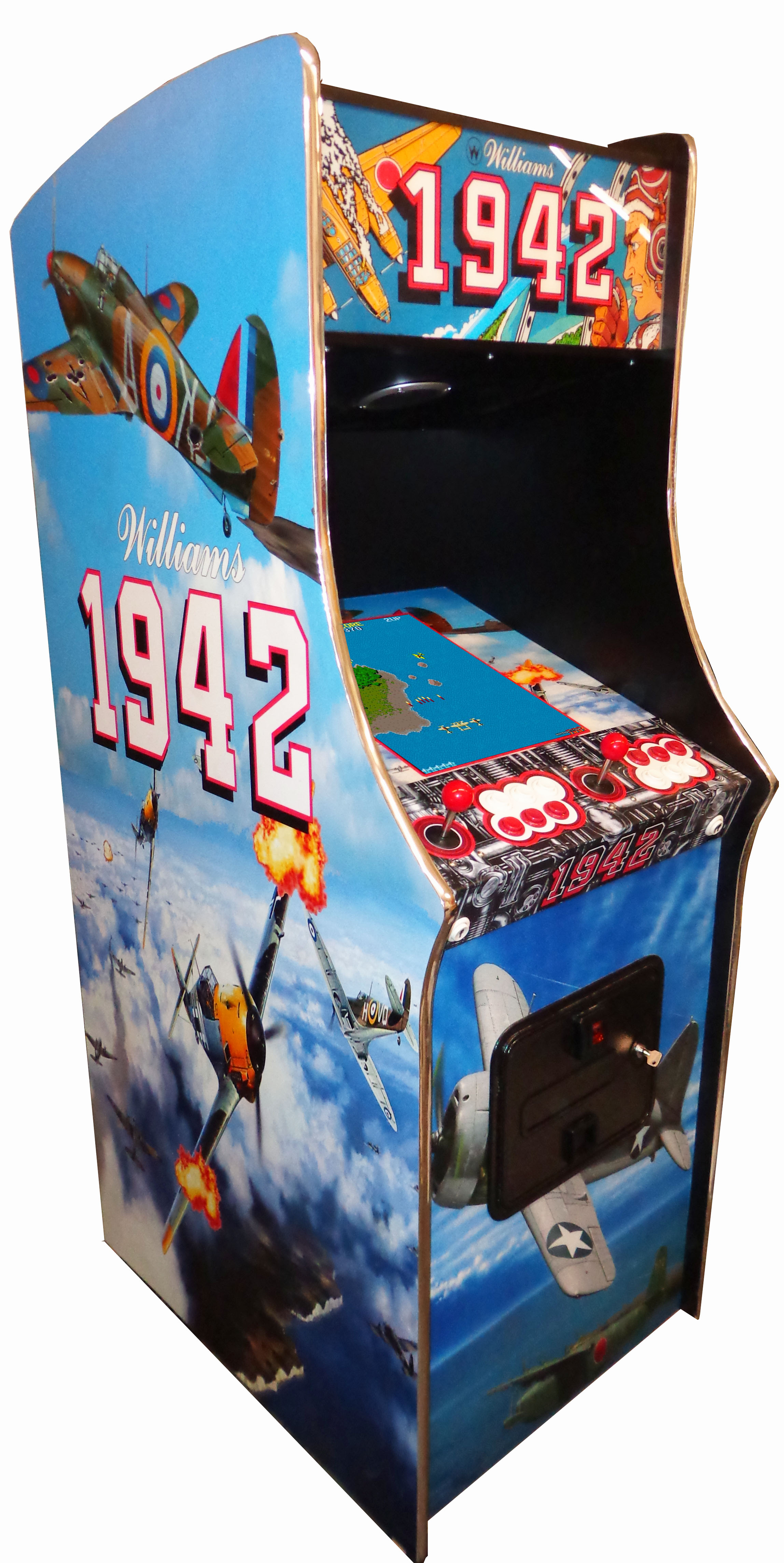 Number 9. – 1942
Number 9. – 1942
Just where did the on-rails, flight-shooter (or Shoot’em up or 2D shooter) craze began before its inevitable death in popularity by the beginning of the 2000s? Not only 1942 started it all, but it also was the clear blueprint of the genre for many other to follow. Yeah, there are so many other games in the genre that does so much more than 1942, especially in the creative and the over-the-top department. 1942 is a boring, boring shooter. Maybe I should have led with that. When I started playing it, I knew to expect a more limited take on the genre. I figured that 1943 would have expanded on its predecessor a bit. What I discovered is that 1943: The Battle of Midway (which I believe is based on 1943: Kai) actually expanded on it a ton. Very nearly everything that made me love the series is missing from its first installment. A final point worth mentioning is that 1943 had a number of repetitive but still fairly memorable tunes playing in the background. Capcom’s composers did a good job there. Here, on the other hand, they went with the sound of drums. The result is not unlike a marching band that is warming up to produce some sort of music, but then never does. The drumming quickly grates on the nerves, and it doesn’t stop until you mute the volume or gouge out your ears. I recommend the former of those two options.
 Number 8. – Excite Bike
Number 8. – Excite Bike
From the outset, one could tell that Excitebike was cut from a different cloth than many of its sports-based brethren. In an era where many such games, including some of those found on Nintendo’s own platform, were named simply for the sport represented (Golf, Tennis, Baseball, Ice Hockey, etc.), Excitebike was able to offer the promise of something more in name alone. Players were given the option of racing solo, or against a group of computer-controlled riders; in either situation, the goal was to beat the posted times in order to qualify for the Excitebike championship race. Placing first would give players a positively-reinforced message that “It’s a new record!” Nintendo would eventually go on to re-release the original Excitebike in America in a number of forms, including as an unlockable in the game’s 2000 sequel, Excitebike 64; as an obtainable item/unlockable in 2002’s Animal Crossing for the GameCube; as “Excitebike-e” on the Game Boy Advance eReader peripheral in 2003; as part of the Game Boy Advance “Classic NES Series” in 2004; and finally, on the Wii’s Virtual Console on March 19th, 2007. Of note is that just over a month prior to its North American Virtual Console release, it was released in that same format in Europe on February 16th — the same day its second sequel, Excite Truck, would be released in that region.
 Number 7. – Hitchhiker’s Guide
Number 7. – Hitchhiker’s Guide
To The Galaxy
One of the first video games based on a science fiction book, Hitchhiker’s Guide to the Galaxy sold an amazing 350,000 copies on its initial release for Apple II, Macintosh, Commodore 64, DOS, Amiga, Atari 8-bit, and Atari ST. 350,000 copies may not seem like a big deal now, but in 1984 when PC owners were very much in the minority, it was almost unheard of. It placed the game solidly in Infocom’s all-time top five bestsellers. The original packaging included a “Don’t Panic!” pin-on button, a packet of “pocket fluff” (a cottonball), the order for destruction of Arthur Dent’s house, the order for destruction of Earth written in Vogon, official Microscopic Space Fleet (an empty plastic bag), Peril Sensitive Sunglasses (made of black cardboard), the brochure How Many Times Has This Happened to You?, and no tea (a recurring theme in the game). The online 20th anniversary edition won an Interactive BAFTA Award for Best Online Entertainment in 2004. Still located on BBC Radio 4’s ancient server, it has never stopped attracting visitors on a daily basis.
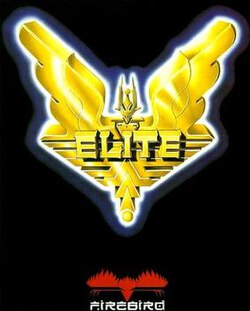 Number 6. – Elite
Number 6. – Elite
In September 1984, from a back alley office behind a British Gas showroom in Cambridge, there emerged a computer game. Elite had primitive graphics consisting of slightly wobbly planets, 3D outlines of space ships, and precious little colour. Its programming, one of the two student creators now admits, was a “mess”. It used just 22 kilobytes of memory, roughly what is required for a routine email today. Yet it would change the face of computer gaming for ever. Elite was different. It was, as that mesmerised eight-year-old discovered, “the first game that did not feel or behave like a game. It was much bigger. You were immersed in this world and it literally became reality for the time you were playing it. It was fun, but carried all the other characteristics of reality, like intensity and drama, too”. In 1985 Elite made history by becoming the first non-American game to become a best seller in the US. Two sequels followed: Frontier: Elite II in 1993 and the less successful First Encounters in 1995. Frontier Developments was founded in 1994 and through this, Braben has produced a string of successful games including Dog’s Life (2003) and LostWinds (2008). The company is now worth £95 million.

Number 5. – Karateka
Imagine if Karate Champ had an adventure more, you got Karateka. Though the game is much slower than Karate Champ, but the fact that 1984 had two games that plays/controls the same, but the whole experience is different shows how interesting this year of gaming was. This was Jordan Mechner’s precursor before making the legendary Prince of Persia that he’ll forever will be remembered for. The game of Karateka places you in the shoes of The Hero, and you must fight your way through the throngs of skilled minions loyal to the evil warlord Akuma, who has kidnapped the lovely princess Mariko and imprisoned her within his fortress, high atop a craggy cliff. Your only weapon is your skill at karate, as you attempt to fight your way through ever-more-powerful foes, deep into Akuma’s sanctum, and ultimately facing the warlord himself. It may take many tries before you find victory, but Karateka was designed such that a successful run can be made — by the skilled player — in one sitting, around half an hour.
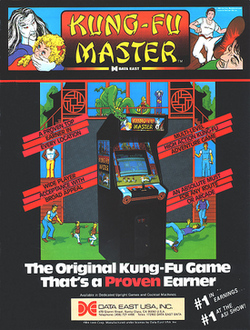 Number 4. – Kung Fu Master
Number 4. – Kung Fu Master
Here is a game that sparked the fire for many beat’em up games in the years to come. This game came out in 1984, it was produced by ”Irem corp.” in Japan, and licensed to ”Data East” in America. This game is ”Kung Fu Master”. ”Kung Fu Master” was originally named ”Spartan X”, which was based off of an novel sold in Japan many years ago. ”Kung Fu Master” featured an character named Thomas Lee, a Bruce Lee mimic, who has to rescue his girlfriend, Sylvia, from the villain, Mr. X. ”Kung Fu Master” spawned many home versions, for Atari 2600 and 7800,and an NES version just intitled ”Kung Fu”. Also, there was a Game Boy version which had a completely different setting, new moves, and items. ”Kung Fu Master” also, spawned two sequels. The first one was ”Vigilante” which came out in 1988. ”Vigilante” was so insanely hard that it frustrated gamers away from playing it. The next one came out in 1990 on the Fanicom(Nintendo) in Japan. It was named Spartan X 2(Kung Fu 2) and I have to tell it was a whole and a hell a lot than ”Vigilante” but, too bad it was only sold in Japan. Fortunately, a good console emulator doesn’t have any limits…. I bet 30 years from now, the grandchildren of our present gamers will enjoy ”Kung Fu Master” like if it was new and we the future grandparents will be happy. Hell yeah, should played over again. And for any parents out there who worry about the blood and gore of video games today don’t have to worry about this one, because ”Kung Fu Master” is grade A!
 Number 3. – Punch-Out!!
Number 3. – Punch-Out!!
I bet some of you Nintendo fans who have no further reference or retrospective of the company before releasing the NES. You might think of Mike Tyson’s Punch-Out when I refer the series, but the series actually had its start with a forgotten game in the arcades. Even in this first entry in the franchise, it is actually your unique and ‘bigger than life’ opponents that steal the spotlight. On your way to becoming ‘World Video Boxing Champion’ you will face Glass Joe, Piston Hurricane, Bald Bull, Kid Quick, Pizza Pasta and the current champion Mr. Sandman. Each is a sort of ‘puzzle’ you need to ‘solve’ by paying attention to their moves and their ‘tells’ (during the initial loop, the eyes flash yellow when they are about to attack) and acting to block or counter the best way you deem fit. If you are familiar with some of those names, know that the strategies you picked up from other games will work here. You can still take down Glass Joe blindfolded and with one hand only while a perfectly timed gut punch at the charging Bald Bull will send him down to an immediate knock down. It might be a shorter roster than future entries, but the same trademark satisfying learning experience is still present. Punch-Out!! is not only a nostalgic slice of Nintendo’s arcade history, it just so happens to be one of the most enjoyable boxing games ever made, laying down the entire foundation not only for the whole series but for several other games adopting the ‘behind the boxer’ viewpoint. Over three decades later, it is still a joy to pick up and play, still proving to be extremely rewarding when you finally figure out your opponent’s ‘tell’ and proceed to take them to the floor. Until Pato Box steps in the ring, there is no other boxing alternative on the system and despite being content wise lacking when set side-by-side with later entries in the series, the core gameplay loop still delivers the goods. Short, sweet and straight to the point, just like Mr. Sandman’s right uppercut.
 Number 2. – Karate Champ
Number 2. – Karate Champ
So with so many Kung-fu games to come out in 1984, why Karate Champ reigns supreme where there are other games that have an adventure and varied gameplay? How about tight controls, do-or-die scenarios , and competitive multiplayer. Before fighting games were around, we only had this game and it was intense because of one-hit-kills is how it’s gonna end with every game. The controls for Karate Champ are as complex or more so than more modern fighters like Street Fighter II and Mortal Kombat. There are a total of 28 actions associated with the 24 possible joystick positions (they were 4-way joysticks that could be used in combination with each other for 16 positions or either one individually for the other 8 positions). A long time player of Karate Champ will have these all committed to muscle memory but they can be a bit intimidating at first. Graphics and sound were both very good on this game for its day. It even featured human sounding voice from the referee. The moves look like realistic Karate moves and are far less fantasy based than more modern fighting games. The stages for the different levels are nicely done and feature areas that ended up getting nicknamed by players when they would talk about how far they could get in the game. There was the ”boat” level, the ”Burger King” level, the ”windmills”, the ”TeePees”, the ”city”, the ”dojo”, etc. If any of you Tekken or Soul Caliber players come across this game in the arcade, drop a quarter in and see how quickly you are humbled by this 1984 Data East classic. There are no ”special moves”, ”combos” or continues but don’t be surprised if you find yourself dropping in another quarter after the 3rd level guy gives you a lesson in the School of Hard Knocks.
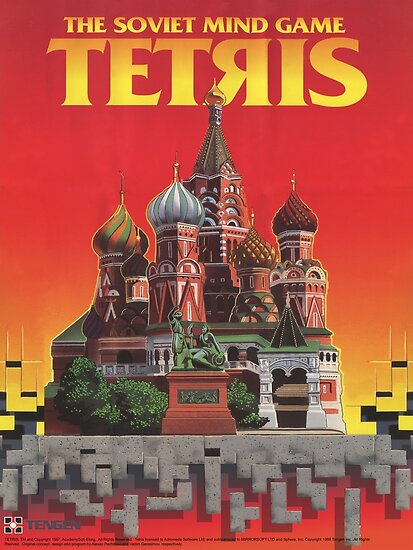 Number 1. – Tetris
Number 1. – Tetris
A little game that came from the communist U.S.S.R./Russia paved the way to breathe a new life to the virtual world of gaming. This is one of those rarest instances in history where the superpower of U.S.A. actually not going paranoid over a communist product that came from the Soviet Union. This was a big thing because for once, the world was at peace with a video game from communist land during the Cold War. When Tetris was released, those who played it almost forgot that there was even a Cold War to begin with. This simple puzzle game, now more than thirty years old, continues to dominate best-of lists, and even sales charts, consistently selling millions of copies whenever there’s a new platform for it to jump to, like a computer virus leaping from network to network. Gaming giant Electronic Arts has sold more than 1 billion copies of all handhelds & game systems from computers, Gameboy, to iPhones. Tetris imprints itself as both procedural memory, which guides frequent repetition of action, and as spatial memory, which deals with our understanding of 2D and 3D shapes and how they interact. If while packing a car for a vacation you’ve seen the suitcases as tetrominoes slotting perfectly together, you’ve experienced a mild version of the Tetris Effect. If after playing Tetris, or one of its descendants, such as Bejeweled or Candy Crush Saga, you still see falling shapes or coloured blocks in the periphery of your vision, you’re one level deeper in. The most extreme examples literally rewire the brain’s ability to record information and retain memories. More than anything, Tetris survives the tests of times with only one other puzzle game that almost was better than Tetris itself, being Portal from 2007. Tetris continues to beat every game in the competition (not just puzzle games) for being so accessible to anyone & everyone for making all of us replay the game forever and ever, as long as we all as humans can still play video games.